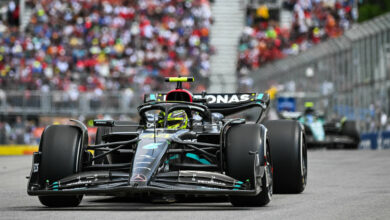The Lamborghini Safari Will Be A Lifted Off-Road Huracan
The VW Group has spent the last few years kicking around the idea of a supercar that could go offroad, combining all the downsides of a raised ride height with none of the benefits of a practical SUV body. As such, they’re dumping it on Lamborghini to build because they’d develop a V10 lawnmower if they could get it registered in the US.
The Safari will be a part of a newly reinvented Huracan lineup, which will be expanded pretty significantly in the coming years. Rumored additions include a Targa, Barchetta, Speedster, SV, GT3 Stradale and Superleggera. (Deep breath.)
But now the shocker: I don’t think the Safari is going to be as stupid as it looks at first glance. It’s based on the Nanuk, an Audi concept car from 2013 that was, in essence, a lifted R8 with a diesel V10. In Lamborghini guise, it’d most likely have a Porsche V8 that’s rumored to replace the Huracan’s V10 when its successor or refresh debuts. The concept behind the Safari is sound: an on-road sports car that can still be used on occasion for bombing down dirt roads like Sebastian Loeb. This much power on gripless roads would be tremendously fun, provided you can leash it; this is where the AWD and ride height come in.
The Safari would not only come with highly adjustable ride height, AWD, and four-wheel steering, but would also have panels to protect the body (a la Chevy Trax, but hopefully they can make it look better) and enlarged wheelarches to allow for maximum suspension articulation. All this combined could create an experience akin to driving a supercar off-road, but without feeling like it’s going to explode at any moment. Automobile Magazine reports that “while not ready to tackle the Rubicon,” the Safari would be “unbeatable on rough Italian C-roads where ground clearance and wheel travel are essential.” I gotta admit, it sounds pretty entertaining.
The Safari and the other thousand Huracans aren’t expected for a few years to come; the next thing on Lamborghini’s agenda is a replacement for the Aventador, likely to come in 2020 or later. And, of course, the Urus, but we don’t speak of that.


